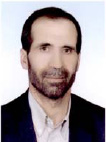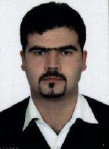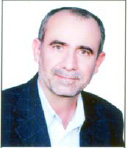|
|
|
| |
| ABSTRACT |
|
Previous studies have shown that physical activity improves learning and memory. Present study was performed to determine the effects of acute, chronic and continuous exercise with different periods on spatial learning and memory recorded as the latency and length of swim path in the Morris water maze testing in subsequent 8 days. Four rat groups were included as follows: 1- Group C (controls which did not exercise). 2- Group A (30 days treadmill running before and 8 days during the Morris water maze testing period). 3- Group B (30 days exercise before the Morris water maze testing period only) and 4- Group D (8 days exercise only during the Morris water maze testing period). The results showed that chronic (30 days) and continuous (during 8 days of Morris water maze testing days) treadmill training produced a significant enhancement in spatial learning and memory which was indicated by decreases in path length and latency to reach the platform in the Morris water maze test (p < 0.05). The benefits in these tests were lost in three days, if the daily running session was abandoned. In group D with acute treadmill running (8 days exercise only) the difference between the Group A disappeared in one week and benefit seemed to be obtained in comparison with the controls without running program. In conclusion the chronic and daily running exercises promoted learning and memory in Morris water maze, but the benefits were lost in few days without daily running sessions in adult rats. |
| Key words:
Exercise, spatial memory, hippocampus, Morris water maze
|
Key
Points
- Daily running influence on spatial memory.
- The velocity of learning can be influenced by running activity.
- Path length is important parameter for measuring the speed of learning.
|
Human and animal studies suggest that exercise retards aging, help in the intervention of age-related diseases and prolong the life span (Samorajski et al., 1985). Exercise has also beneficial effects on brain function, including the promotion of plasticity and the enhancement of learning and memory. These data have indicated that exercise leads to changes at the level of a number of gene transcripts known to be associated with the neuronal activity, synaptic structure and synthesis of neurotransmitters that are important in memory processing (Tong et al., 2001). Exercise affects especially in hippocampus that plays an important integrative role in the CNS. Hippocampus receives information from each of the sensory modalities and projects widely throughout the brain (Swanson, 1983). This area is best known for its role in learning and memory (Wittenberg et al., 2002). Increasing number of reports suggest that adult hippocampus neurogenesis is involved in hippocampus-mediated learning i.e. hippocampus is implicated in various forms of memory, and it has been shown that conditions that increase memory performance such as an enriched environment or running and physical exercise, also enhance neurogenesis (Van Praag and Christie, 1999; Van Praag and Kempermann, 1999). At cellular level, wheel running enhances the firing rate of hippocampus cells in a manner that correlates with the running velocity (Czurko et al., 1999). Exercise has also been shown to enhance hippocampus cholinergic functioning (Fordyce and Farrar, 1991) and neurotrophic factor expression (Farmer et al., 2004). Thus, there is growing evidence for relationship between exercise, neurogenesis, and improved behavioral performance on spatial memory tasks. It has been reported that a long time of regular rehearsal activity enhances long term memory (Parle et al., 2006). In a previous study we have shown that short period of exercises improve memory and learning (Alaei et al., 2006). The aim of the present study was to clarify further in rats these effects of exercises of different time spans using Morris water maze. Method
Experimental animals and exerciseThe Ethics Committee for Animal Experiments in the Isfahan University accepted the study plan. Male Wister rats (n = 40) 90 ± 8 days old and weighing 350 ± 30 g from our laboratory breeding stock were housed singly under controlled conditions (temperature 20-24°, relative humidity 40-70%) and light/darkness cycle12/12 hrs (light on at 8:00 am). Food and water were available ad libitum. The measurements were always done during the first half of the light cycle. Rats were pre-tested for their treadmill running willingness, and those rats, which refused to run, were excluded before the experiments started. To minimize the stress, rats were familiarized to the treadmill running. Prior to Morris water maze test, rats in groups A, B, D were trained on the treadmill. All these animals tolerated the speed and duration of treadmill running and successfully completed the training program. The rats in group A participated in the treadmill exercise session (1 h at speed 17 m/min) for 30 days before and also during all the 8 days when Morris Water maze testing was carried out. Rats in group B participated in the treadmill exercise session (1 h at speed 17 m/min) just for 30 days before the Morris water maze test only. Rats in group D participated in the treadmill exercise session (1 h at speed 17 m/min) just during the 8 days only when Morris water maze testing took place. Rats in group C served as controls. For all groups, Morris water maze testing was performed in 8 consecutive days.
Behavioural apparatusA black circular pool (150 cm diameter ×60 cm high) was filled to 30 cm deep with water (21°C) that was not opaque. A circular platform (10 cm diameter × 28 cm high) was placed within the pool, submerged approximately 2 cm below the surface of the water. The platform was placed in the center of a predetermined quadrant (North-East, North- West, South-East, and South-West) for each trial. The experimenters, computer and extra-maze cues remained constant throughout testing and lighting in the room was 30-50 Lux.
Morris water maze proceduresEach rat was handled daily, for 3 days before the experiments started. The water temperature in Morris water maze test is controlled during experiment (20-24°C). Before the training session rats were accustomed to the water maze for 30 s without a platform. Rat groups performed 4 trials on each of the 8 consecutive days and each trial began with the rat being placed in the pool and released facing the side wall at one of four positions (the Boundaries of the four quadrants, labeled N, S, E and W). Release positions were randomly predetermined, but the same for all rats on all trials for a given day of testing. The platform was placed in the center of a different quadrant each day (pseudo-randomly predetermined), but it remained in the same quadrant for four trials on a given day. On each trial, the rat was allowed to swim until it found and remained on the platform for 15 s, or until 90 s had passed and if it had not found the platform, at which point it was guided to the platform by the experimenter and allowed to stay on the platform for 15 s. Then the rat was removed from the pool, dried and placed back in its holding bin for a period of 5 min, after which the second trial was conducted. The time to reach the platform (latency) and the length of swim path were recorded semi- automatically by a video tracking system.
Data analysesData analyses were carried out by means of Analysis of Variance with groups and days as the independent variable, and performance in each session (path length and latency) as the dependent variable. All data were expressed as means ± SEM. The data of different groups was compared using Two-way ANOVA test with Tukey’s Post-Hoc between days. Differences with p < 0.05 were considered significant.
Treadmill running for 30 days before and during the eight days of Morris water maze testing caused a significant enhancement of learning and memory in Morris water maze tests as the length of swim path was shorter in group A in comparison with control group C (Figure 1a and 1b). Same finding was made when the time i.e. latency was recorded (Figure 2a and 2b). In Morris water maze testing each group showed learning as both the swimming length and the time (latency) to find the platform shortened (Figure 1b and 2b). Rats of Group A found the platform in significantly shortest time in the Morris water maze in all testing days. Group B of rats which had been exercising on the treadmill for 30 days before the Morris water maze tests but which did not continue the treadmill running sessions during the Morris water maze testing period lost some of the benefits obtained as the time to reach the platform., and their swimming pathway was statistically insignificantly different from the controls from the third day of testing in Morris water maze (Figure 1b). The running exercises only during the 8 days of Morris water maze testing, .gave some benefit from the days six and onwards as then the path lengths were similar as in Group A and on the days seven and eight there seemed to be advantage over the controls participating only in the learning and memory testing (Figure 1b and Figure 2b). Comparison within each group during the eight days of Morris maze testing, the path lengths revealed a significant progressive decrease in all groups except in controls whose path lengths stabilized after one week (p < 0.002) (Figure 1b) In this period, also the latency significantly decreased (p < 0.001) with again the exception of the controls whose latencies stabilized after one week (Figure 2b). The present results showed in adult rats that increased physical activity for 30 days and continuing during 8 days of Morris water maze testing as treadmill exercises, significantly enhanced learning and memory in Morris water maze testing (Figure 1a and 2a). The discontinuation of the running exercise caused a partial loss of the gained benefit. The group which had stopped running lost its benefit in three days (Figure 1b and 2b) Acute exercises only after a week of daily running sessions reached the level of path lengths and latencies seen in Group A having been training whole study time. These are novel findings, as we have found no similar reports in the literature to best of our knowledge. The present results have potentially great value in public health, although animal experiments need to be confirmed in human studies. The present results emphasize the importance of physical activity as a life style. Our present results in rats showed that the physical activity should preferably be daily to maintain the benefits concerning learning and memory. In rats the benefits in memory were lost in three days without running session after one month of daily training program. The maintenance of brain health and plasticity are important public health goals. It is clear that the behavioral stimulation and physical exercise may help also people to achieve this goal. Over the past decade, a number of studies on humans have shown the benefits of exercise on brain health and function, particularly in aging populations (Ivy et al., 2001). Hippocampus-dependent learning may enhance survival of cells prior to spatial training (Nibuya et al., 1995). Differences in the temporal expression profile among the various gene systems illustrate, how acute and chronic exercise can impact the brain even at the molecular level (Molteni et al., 2002). It is interesting that synapsin I was predominantly up-regulated with short periods of exercise (3 and 7 days), consistent with its role on synaptic vesicle release. Synaptotagmin showed a progressive increase with longer periods of exercise, consistent with its role on synaptic vesicle formation (Augustine, 2001). Acute treadmill running (contemporaneous with passive avoidance test) improved promotion of learning and short-term memory in morphine-treated rats and memory deficit caused by morphine was also reversed by treadmill running (Alaei et al., 2006). Exercise for 18 days can cause that memory improve in the three behavioral memory models in comparison which those subjects that had been sub-acute and acute exercise in rats (Parle et al., 2006). There is relationship between the working memory capacity and the level of physical activity rate (Lambourn, 2006). Stress and cortisol have destructive effects on learning and can decrease memory (Shors, 2004). One of the most important effects of chronic exercise is the reduction of stress via decrease response to ACTH as well as release and level of cortisol (Anderson et al., 2000). The concentration of epinephrine also increase during short time exercise in the hipocompus dentate gyrus in rat (Ahmadiasl et al., 2003). Our results demonstrated that the treadmill running improved the spatial learning and memory in rats studied with help of Morris water maze test. The continuity of daily physical activity seems to important as the benefits concerning the memory can be lost already in few days at least in adult and periods of exercising.
| ACKNOWLEDGEMENTS |
We wish to thank Dr. Hossaini and special thanks to Dr. Nasimi. |
|
| AUTHOR BIOGRAPHY |
|
 |
HojjatAllah Alaei |
| Employment: Department of Physiology, Faculty of Medicine, Esfahan University of Medical Sciences, Esfahan, Iran. |
| Degree: PhD |
| Research interests: Neurotransmitter function in the brain. |
| E-mail: alaei@med.mui.ac.ir |
| |
 |
RohAllah Moloudi |
| Employment: Department of Physiology Faculty of Medicine, Esfahan University of Medical Sciences, Esfahan Iran. |
| Degree: MSc |
| Research interests: Learning and memory. |
| E-mail: moulody@yahoo.com |
| |
 |
Ali Reza Sarkaki |
| Employment: Department of Physiology, School of Medicine Ahvaz University of Medical Science, Ahvas Iran. |
| Degree: PhD |
| Research interests: Electrical physiology. |
| E-mail: a-sarkaki@ahv.mui.ac.ir |
| |
 |
Hamid Azizi-Malekabadi |
| Employment: Khoraskan Azad University. |
| Degree: PhD |
| Research interests: Learning and memory. |
| E-mail: |
| |
 |
Osmo Hanninen |
| Employment: Prof., Depart. of physiology, Univ. of Kuopio, Finland. |
| Degree: PhD |
| Research interests: Muscle metabolism and function, ergomomics, biotranformation biomonitoring and comparative biochemical toxicology. |
| E-mail: osmo.hanninen@ uku.fi |
| |
|
| |
| REFERENCES |
 Ahmadiasl N., Alaei H., Hänninen O. (2003) Effect of exercise on learning, memory and levels of epinephrine in rat’s hippocampus. Journal of Sports Science and Medicine 2, 106-109. |
 Alaei H., Borjeian L., Azizi M., Orian Sh., Pourshanazari A., Hänninen O. (2006) Treadmill running reverses retention deficit induced by morphine. European Journal of Pharmacology 536, 138-141. |
 Anderson B.J., Rapp D.N., Baek D.H., McCloskey D.P., Cobum-Litvak P.S., Robinson J.K. (2000) Exercise influences spatial learning in the radial arm maze. Physiology Behavioral 70, 425-429. |
 Augustine G.J. (2001) how does calcium trigger neurotransmitter release?. Current Opinion Neurobiology 11, 320-326. |
 Czurko A., Hirase H., Csicsvari J., Buzsaki G. (1999) Sustained activation of hippocampal pyramidal cells by ‘space clamping’ in a running wheel. European Journal of Neuroscience 11, 138-352. |
 Farmer J., Zhao X., Van Praag H., Wodtke K., Gage F.H., Christie B.R. (2004) Effect of voluntary exercise on synaptic plasticity and gene expreesion in dentate gyrus of adult male Sprague-Dawley rats in vivo. Neuroscience 124, 71-79. |
 Fordyce D.E., Farrar R.P. (1991) physical activity effects on hippocampal and parietal cortical cholinergic function and spatial learning in F344 rats. Behavioral. Brain Reserch 43, 115-123. |
 Ivy A.S., Rodriguez F.G., Russo-Neustadt A. (2001) the effects of NE and 5-HT receptor antagonists on the regulation of BDNF expression during physical activity. Society for Neuroscience Abstracts 253, 213-. |
 Lambourn K. (2006) The relationship between working memory capacity and physical activity rates in young adults. Journal of Sports Science and Medicine 5, 149-153. |
 Molteni R., Ying Z., Gomez-Pinilla F. (2002) Diffrential effects of acute and chronic exercise on plasticity-related genes in the rat hippocampus revealed by microarray. European Journal of Neuroscience 16, 1107-1116. |
 Monyer H., Burnasheve N., Laurie D. J., Sakman B., Seeburg P. H. (1994) Devalopmental and regional expression in the rat brain and functional properties of four NMDA receptors. Neuron 12, 529-540. |
 Nibuya M., Morinobu S., Duman R.S. (1995) Regulation of BDNF and trkB mRNA in rat brain by chronic electroconvulsive seizure and antidepressant drug treatments. Journal of Neuroscience 15, 7539-7547. |
 Parle M., Singh N., Vasudevan M. (2006) Regular rehearsal helps in consolidation of long term memory. Journal of Sports Science and Medicine 5, 80-88. |
 Samorajski T., Delaney C., Dunlap W.P. (1985) Effect of exercise on longevity, body weight, locomotor performance, and passive-avoidance memory of C57B1 mice. Neurobiology Aging 6, 17-24. |
 Shors T.J. (2004) Learning during stressful time. Learning and Memory 11, 137-144. |
 Swanson L.W., Seifert W. (1983) Neurobiology of hippocampus. The hippocampus and the concept of the limbic system. London. Academic Press. |
 Tong L., Shen H., Perreau V.M., Balazs R., Cotman C.W. (2001) Effects of exercise on gene-expression profile in the rat hippocampus. Neurobiology of Disease 8, 1046-1056. |
 Van Praag H., Christie B.R., Sejnowski T.J., Gage F.H. (1999) Running enhances neurogenesis, learning, and long-term potentiation in mice. Proceedings of the National Academy of Sciences of USA 96, 13427-13431. |
 Van Praag H., Kempermann G., Gage F.H. (1999) Running increases cell proliferation and neurogenesis in the adult mouse dentate gyrus. Nature Neuroscience 2, 266-270. |
 Wittenberg G.M., Tsien J.Z. (2002) An emerging molecular and cellular framework for memory processing by the hippocampus. Trends in Neuroscience 25, 501-505. |
|
| |
|
|
|
|

